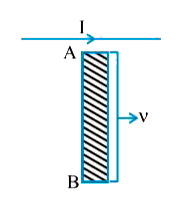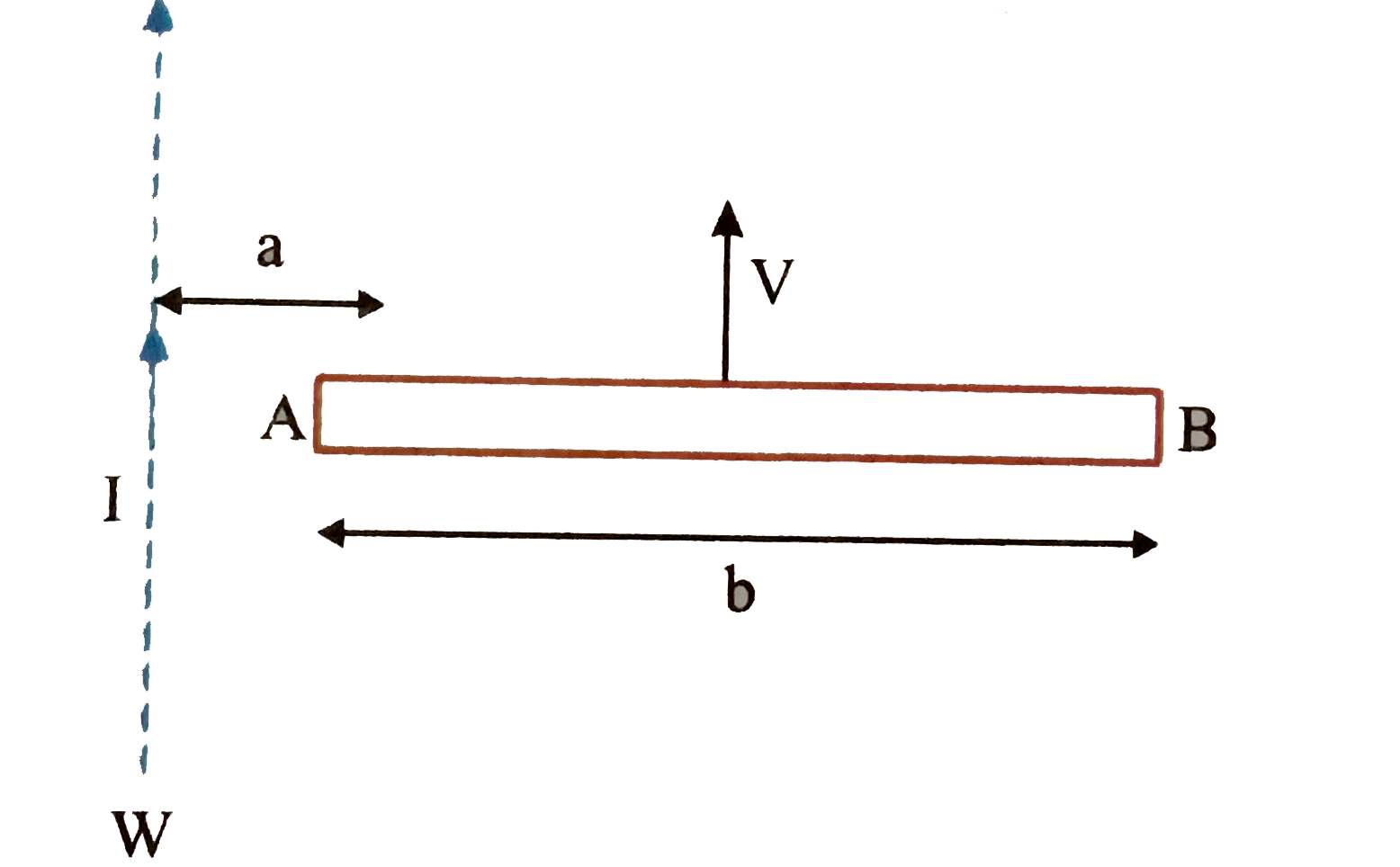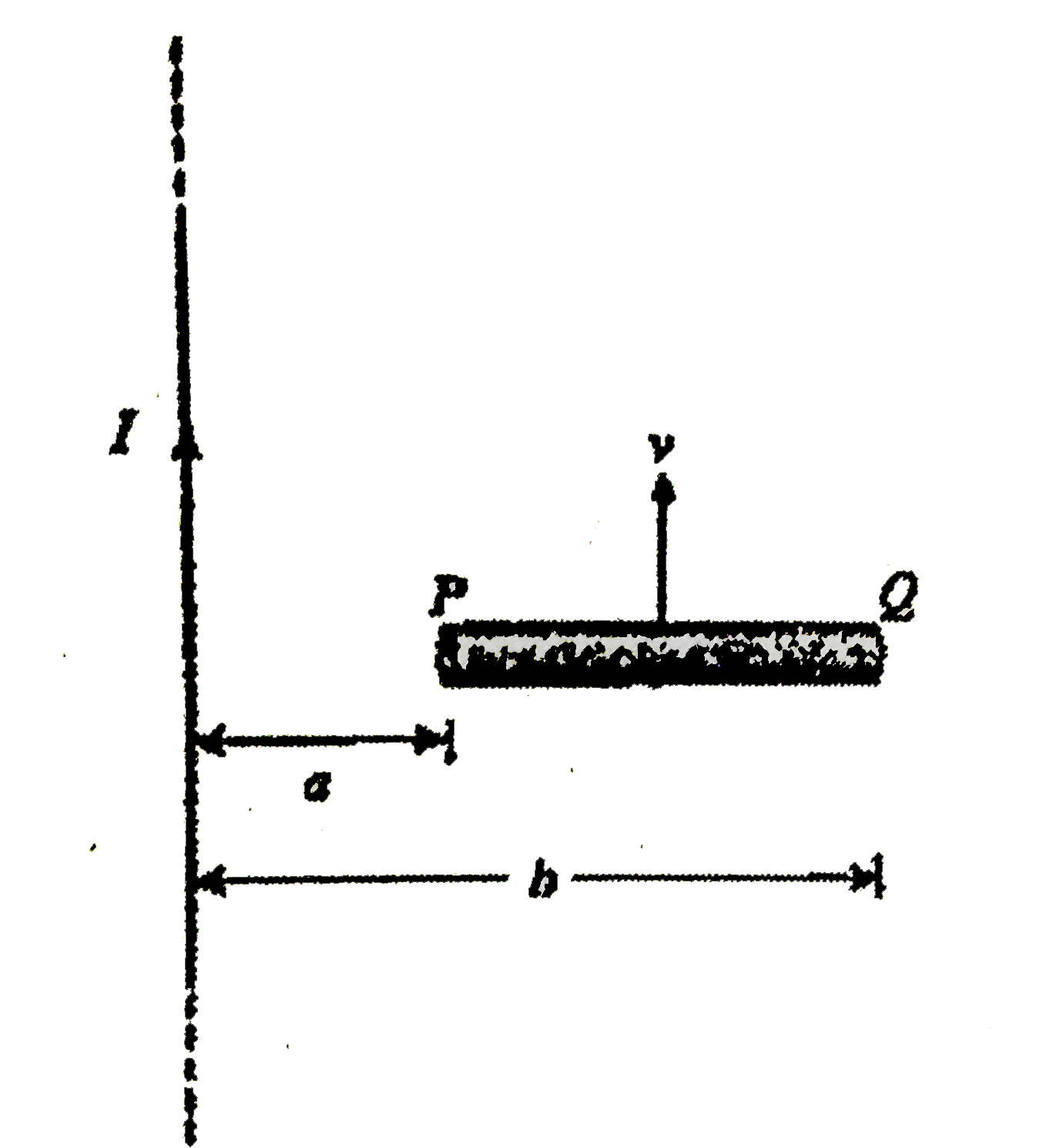Wire carrying a study current and rod AB are in the same plane the rod move parallel to wire with velocity v then which end of the rod is at higher potential.

End A will be at higher potential.
Topper's Solved these Questions
- UNIT–III & UNIT–IV MAGNETIC EFFECTS OF CURRENT AND MAGNETISM & E.M.I. AND ALTERNATING CURRENTBOOK - CBSE COMPLEMENTARY MATERIALCHAPTER - UNIT–III & UNIT–IV MAGNETIC EFFECTS OF CURRENT AND MAGNETISM & E.M.I. AND ALTERNATING CURRENTEXERCISE - SHORT ANSWER QUESTIONS (2 Marks)
41 Videos
- UNIT–III & UNIT–IV MAGNETIC EFFECTS OF CURRENT AND MAGNETISM & E.M.I. AND ALTERNATING CURRENTBOOK - CBSE COMPLEMENTARY MATERIALCHAPTER - UNIT–III & UNIT–IV MAGNETIC EFFECTS OF CURRENT AND MAGNETISM & E.M.I. AND ALTERNATING CURRENTEXERCISE - SHORT ANSWERS QUESTIONS (3 Marks)
27 Videos
- SAMPLE QUESTION PAPER 2019BOOK - CBSE COMPLEMENTARY MATERIALCHAPTER - SAMPLE QUESTION PAPER 2019EXERCISE - Section C
19 Videos
Similar Questions
A rod of length l is placed perpendicular to a long wire carrying current i. The rod is moved parallel to the wire with a velocity v. Find the emf induced in the rod, if its nearest end is at a distance a from the wire.

View SolutionA rod of length l is placed perpendicular to a long wire carrying current i. The rod is moved parallel to the wire with a velocity v. Find the emf induced in the rod, if its nearest end is at a distance ‘a’ from the wire.
View Solution
Knowledge Check
The current carrying wire and the rod AB are in the same plane. The rod moves parallel to the wire with a velocity v . Which one of the following statements is true about induced emf in the rod
 AEnd A will be at lower potential with respect to BBA and B will be at the same potentialCThere will be no induced e.m.f. in the rodDPotential at A will be higher than that at B
AEnd A will be at lower potential with respect to BBA and B will be at the same potentialCThere will be no induced e.m.f. in the rodDPotential at A will be higher than that at BIn the figure shown AB is a plastic rod moving with a constant velocity v, W is an infinite long wire carrying current I. The end of the rod which is at higher potential is
 AABBCNo emf will br induced in the rodDNone of the above
AABBCNo emf will br induced in the rodDNone of the above
A rod of length l is kept parallel to a long wire carrying constant current i . It is moving away from the wire with a velocity v.F∈dtheemf∈duced∈thewirewhenitsdistance∈thewirewhenitsdistanceomthelongwireisx.
View SolutionA conducting rod MN moves with a speed v parallel to a long straight wire which carries a constant current i, as shown in fig. The length of the rod is normal to the wire. Find the emf induced in the total length of the rod. State which end will be at a lower potential.

View SolutionA copper rod of length L is moving at a uniform speed v parallel to along straight wire carrying a current of I as shown in figure-5.25. The rod is perpendicular to the wire with its ends at distance a and b from if . Calculate the motional EMF induced in the rod.

View SolutionA fixed wire AB carries current I. An electron is moving parallel to the wire, in which direction does the electron tend to move?
View SolutionA fixed wire AB carries current I. An electron is moving parallel to the wire, in which direction does the electron tend to move?
View SolutionAn infinite wire carries a current I. An S- shaped conducting rod of two semicircles esch of radius r is placed at an angle θ to the wire. The center of the conductor is at a distance d from the wire. If the rod translates parallel to the wire with a velocity v as shown in Fig. .3.56, calculate the emf induced across the ends Ob of the rod.

View Solution
